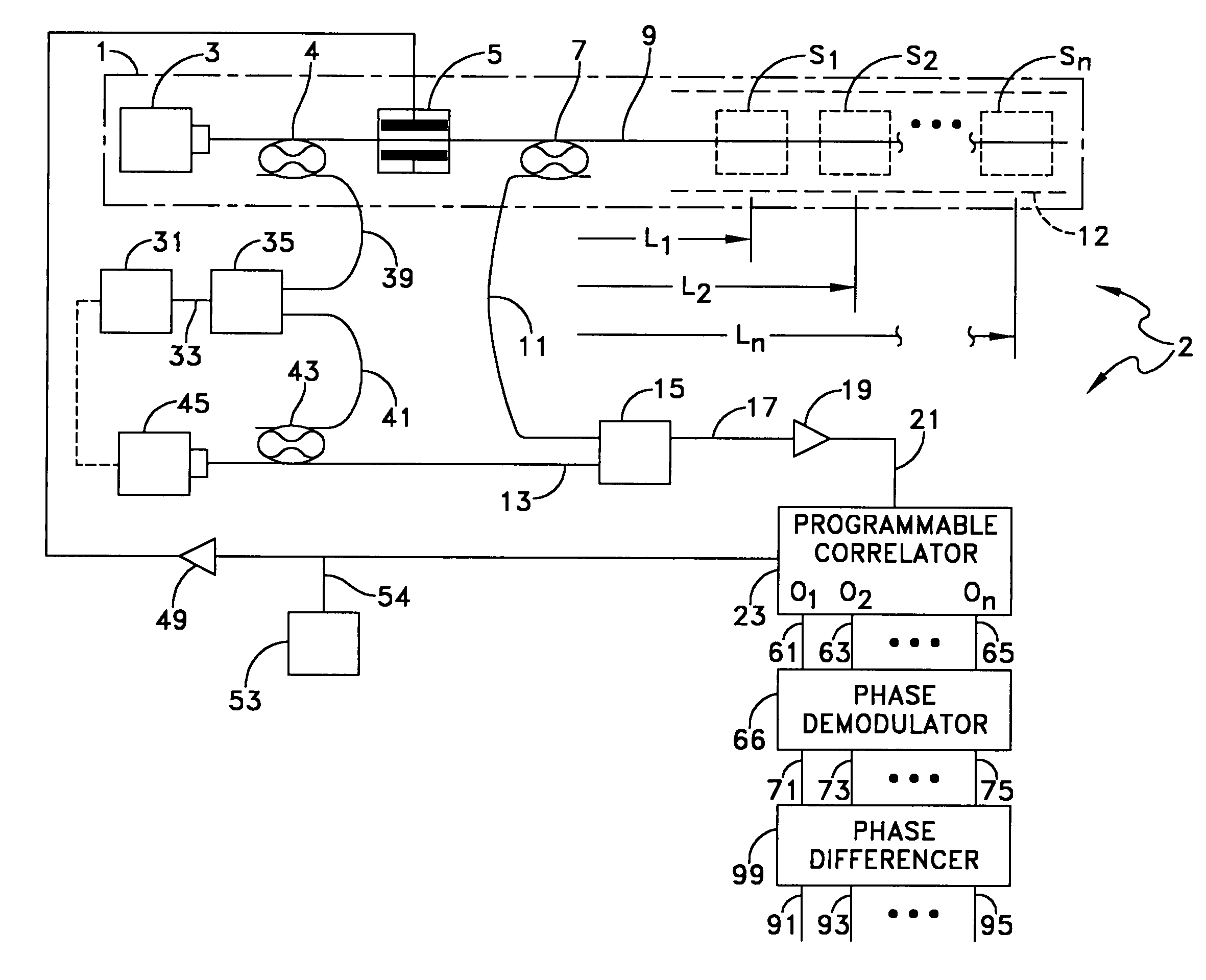Natural fiber span reflectometer providing a virtual signal sensing array capability
a reflectometer and natural fiber technology, applied in the field of timedomain reflectometers, can solve the problems of not showing how to obtain signals, fiber spans costing hundreds of thousands of dollars each, and the cost of manufacturing such perimeter monitoring spans using reflective bragg grating sensors
- Summary
- Abstract
- Description
- Claims
- Application Information
AI Technical Summary
Benefits of technology
Problems solved by technology
Method used
Image
Examples
Embodiment Construction
(1) Description of Underlying Theories
[0045]a. Heterodyne Optical Detection
[0046]Optical receivers are built around photodetectors which detect optical power rather than instantaneous electric field. Typically the photodetector output current is proportional to the incident optical power. This relationship severely limits the dynamic range of an incoherent optical receiver because for every decibel of optical power lost in a receiver system two decibels of receiver output current is lost. The square law characteristics of photodetectors limits typical incoherent optical receivers (often called video detection receivers) to dynamic ranges of less than 80 dB and optical detection noise floors to greater than −80 dBm per Hertz bandwidth. As illustration, suppose an electric field Es(t) [volt / meter] immersed in a material of impedance η [Ohms] impinges upon a photodetector of responsivity [ampere / watt] loaded by resistor R1 and amplified by amplification A, then the optical power Ps by...
PUM
 Login to View More
Login to View More Abstract
Description
Claims
Application Information
 Login to View More
Login to View More - R&D
- Intellectual Property
- Life Sciences
- Materials
- Tech Scout
- Unparalleled Data Quality
- Higher Quality Content
- 60% Fewer Hallucinations
Browse by: Latest US Patents, China's latest patents, Technical Efficacy Thesaurus, Application Domain, Technology Topic, Popular Technical Reports.
© 2025 PatSnap. All rights reserved.Legal|Privacy policy|Modern Slavery Act Transparency Statement|Sitemap|About US| Contact US: help@patsnap.com



